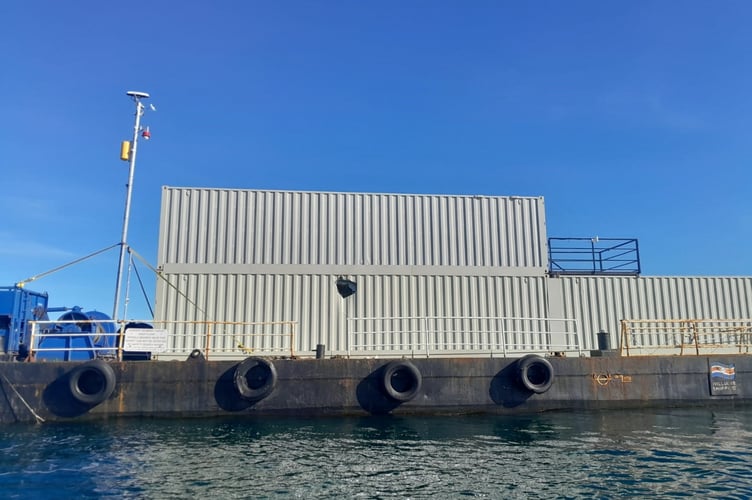The Royal Navy’s maritime attack helicopters will soon pack an even bigger punch after a milestone firing of a new missile designed to destroy enemy warships and attack craft.
The Wildcat HMA Mk2 can already fire Sting Ray torpedoes for hitting underwater threats and lightweight Marlet missiles for taking out boat swarms or small ships.
But, so far, the Wildcats have not been able to target larger warships, like corvettes.
The Royal Navy has now completed the first guided firing of the anti-ship Sea Venom missile – which packs ten times the punch of Martlet, with the design of destroying more heavily armoured ships – on a target vessel in Cardigan Bay, off the coast of Aberporth.

Lieutenant Commander Robin Kenchington, from the Royal Navy’s test and evaluation squadron 744 Naval Air Squadron, said: “It was fantastic to see a full end-to-end demonstration of the missile.
“Every aspect of the firing worked well – from the ease-of-use in-cockpit for crews, through the performance of the missile in flight, right up to the accuracy on the target.
“The Wildcat has another potent addition to its arsenal, increasing the ability of front-line crews to fight from a greater stand-off distance; this maximizes their lethality whilst keeping them safe from enemy defences.”

The target vessel was designed and built by QinetiQ engineers, made of three containers atop a barge. Each container wall had multiple individually controlled heating elements to simulate a target more accurately.
The firing marks a significant milestone in the integration of Sea Venom onto Wildcat, which will add to the potent array of weaponry protecting Royal Navy warships, namely the Queen Elizabeth-class aircraft carriers.
Pete Fawcett, the Senior Responsible Owner of the Future Air-to-Surface Guided Weapon, said: “This first guided firing is a significant step forward for the integration of Sea Venom onto the Royal Navy’s Wildcat helicopters.
“The success of the trial was the result of an outstanding team effort across Leonardo UK, MBDA, QinetiQ and the Ministry of Defence.”

The Yeovilton-based Wildcat Maritime Force, some 400 people and 28 Wildcats under its two squadrons, are those pushing the maritime variant of the helicopter – the HMA Mk2 – into the future.
815 Naval Air Squadron takes care of front-line operational work on Royal Navy ships around the world, while its sister 825 Naval Air Squadron’s business is training and developing the aircraft, identifying, and understanding its potential.
The Wildcats, which came into service in 2015, have been given notable firepower in recent years, with the addition of a new weapons-carriage to carry torpedoes and missiles.
The helicopters can also wield a.50 calibre machine gun on its door and play host to Royal Marines sniper teams capable of knocking out a drug smuggling speed boat from range.
Sea Venom is the latest weapon to be developed, replacing the Sea Skua which went out of service in 2017.
It is a modern primarily anti-ship missile designed to destroy a range of attack craft up to large vessels such as corvettes from safe stand-off ranges, up to 20km away.
The missile has a 30kg warhead and has a ‘coastal suppression capability’, which means it can hit shoreline targets, destroying potential threats to warships operating nearby.
It offers a variety of different flight profiles – including sea skimming – and can be fired in a salvo.
Sea Venom is a major technological advancement, providing a very precise and powerful weapon for the Wildcat.
This optional, operator-in-the-loop, monitor-and-control facility, enables new capabilities such as: inflight re-targeting; final aim point correction and refinement; or safe abort.
The programme has been a collaborative effort by MOD and industry teams around the UK and consisted of a single firing.
Commodore Nick Sargent, DE&S’ Head of Helicopters, added: “These firings mark a vital step forward in the integration of the Sea Venom missile into what is already an outstanding helicopter to provide the Royal Navy with a world-class capability. I am grateful to all those across industry and the Ministry of Defence who have worked so hard to achieve this milestone.”
The Cardigan Bay danger area is used as a military testing and training area established during the Second World War and covers 6,500 square kilometres of Cardigan Bay from sea level to unlimited height.



